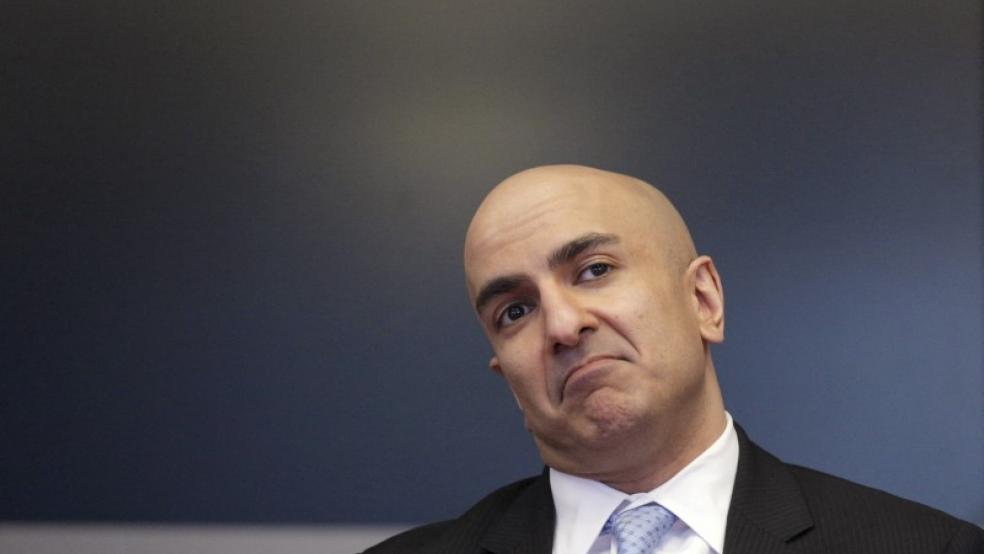For more clues as to how slumping oil prices and a faltering Chinese outlook could sway policymakers in the coming months, look no further than January's meeting of U.S. Federal Reserve rate setters.
Concerns over weaker global growth are casting doubt on the pace at which the U.S. central bank will continue hiking interest rates, after December's first rise in nearly a decade.
Related: Is Obama’s Positive Spin on the US Economy Catching On?
Expectations for a March rate increase are already starting to fade, and economists polled by Reuters now forecast three hikes in 2016 rather than the four initially floated by the Fed.
Against a backdrop of volatile trading in global stocks, Fed officials have shrugged off in recent weeks the impact of financial market swings on their decisions.
The Fed is widely expected to leave its federal funds rate unchanged at 0.25-0.50 percent when policymakers conclude their meeting on Jan. 27. But falling inflation assumptions, coupled with the market turbulence, could lead them to signal deepening concern over the U.S. and world economic outlooks.
"If the statement acknowledges increased risks without mention of expected resilience in the medium-term outlook, this would be a dovish sign," analysts at BNP Paribas said in a note.
Related: The Devil's Due: China Could Send S&P 500 Below 666
U.S. data paints a more subdued domestic picture, too, as a strong dollar buffets the economy. Consumer prices unexpectedly fell in December.
Recent weak reports on retail sales, housing starts and industrial production suggest a slowdown in activity at the end of last year, as did a six-month high in U.S. jobless claims reached in mid-January.
Preliminary fourth quarter data on U.S. output due on Jan. 29 should confirm the easing momentum, with the annual pace of expansion seen coming in at 0.7 percent, according to the latest model from the Atlanta Federal Reserve.
The most recent Reuters poll put U.S. growth at 1.3 percent, following a 2 percent rise in the third quarter.
Related: Here’s What Bernie Sanders Would Do to the Fed
Some believe a weaker fourth quarter is unlikely to cloud longer-term prospects, however, with underlying trends in the labor market still robust.
"A fourth quarter slowdown is not likely to derail the economy from growing at close to the 2.2 percent trend rate in 2016," HSBC analysts said.
GLOBAL GROWTH IN FOCUS
The Fed will lay its cards on the table days after the European Central Bank signaled that further easing of its monetary policy was likely in March.
Tumbling oil prices have sunk the outlook for inflation, pushing the ECB to flag its willingness to act again after a deposit rate cut and an extension of its government bond-buying program in December.
Related: The Fed Just Raised Rates. Here’s What It Means for Your Money
A preliminary reading of consumer prices in the euro zone due on Jan. 29 should give more clues. Prices are expected to have risen 0.4 percent year-on-year, though economists believe they will soon head back into negative territory.
ECB chief Mario Draghi stressed on Friday the outlook for a gradual economic recovery in the euro zone had not changed.
But concerns are mounting about the impact of weaker growth elsewhere after China confirmed its 2015 expansion was the slowest in 25 years and the International Monetary Fund cut growth forecasts, citing the effects of the rout in commodities.
In Russia, where the next regular interest rate decision is due on Jan. 29, the central bank has warned the government faces "difficult choices" as the price of oil, its main export, falls.
The rouble has crashed to record lows in recent days and officials now expect an economic contraction in 2016.
Markets are also bracing for a rate review in Japan on Jan. 28-29, as speculation grows that the central bank may expand its stimulus program. Economists expect a cut in inflation forecasts, and some are not ruling out more surprises.
"We maintain our core scenario of no easing at this meeting, but acknowledge the risk of an unexpected announcement from the BoJ next week," said Betty Rui Wang, an economist at Standard Chartered.
The Bank of Japan meeting coincides with data, including on factory output and jobs for December, that could reinforce fears the economy is still struggling after years of stagnation.




